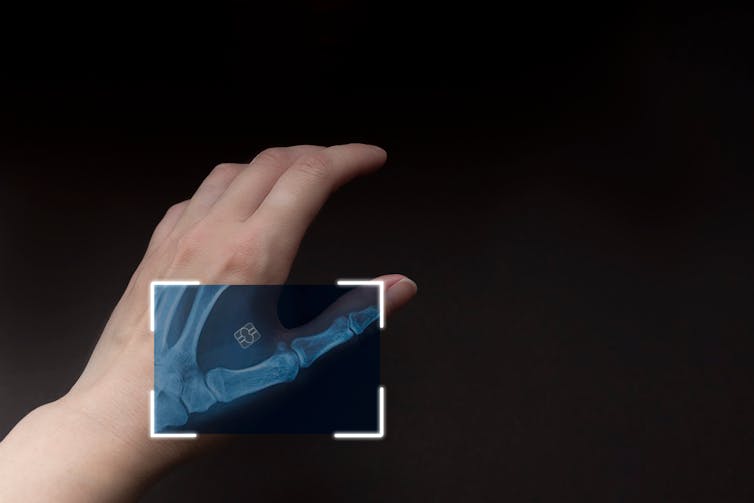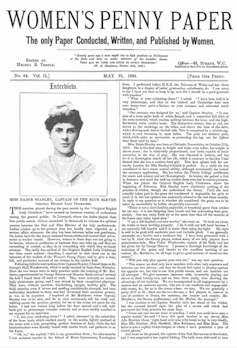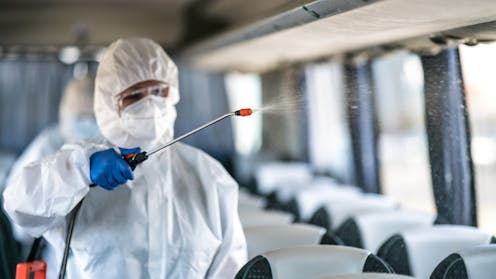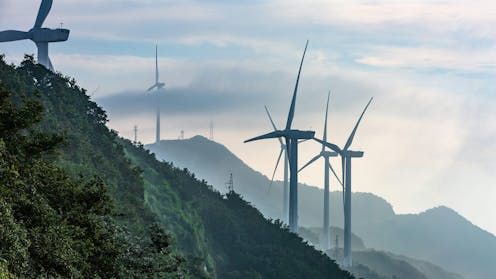Source: The Conversation – in French – By Jean-Michel Médoc, Chercheur agronome de la gestion territoriale des déchets organiques, Cirad
Dans le monde, 1,6 milliard de personnes souffrent de carences en micronutriments. Cette « faim cachée » touche principalement les enfants, les adolescents et les femmes en âge de procréer. Pour la combattre, les déchets organiques, combinés à des microorganismes locaux, peuvent être mobilisés pour améliorer la qualité nutritionnelle des produits de récolte.
Selon l’Organisation mondiale de la santé (OMS), la malnutrition désigne les déséquilibres dans l’alimentation. Contrairement à l’idée que l’on s’en fait généralement, la malnutrition concerne donc non seulement les carences, mais aussi les excès en nutriments.
Il existe deux formes de malnutrition, très différentes l’une de l’autre : la dénutrition (qui englobe le retard de croissance, l’émaciation – une perte excessive de poids – et les carences en micronutriments) et le surpoids ou l’obésité (qui résulte d’un excès de graisses corporelles).
En 2022, 881 millions d’adultes souffraient d’obésité, et plus de 148 millions d’enfants de moins de 5 ans souffraient de retard de croissance, tandis que 45 millions étaient atteints d’émaciation.
En outre, on estime que, sur la planète, 1,6 milliard de personnes souffrent de carences en micronutriments. Celles-ci peuvent avoir de lourdes conséquences sur la santé.
Pour lutter contre ces carences, une solution pourrait être de réutiliser les déchets organiques. Explications.
La « faim cachée », des carences aux conséquences graves
Dans de nombreuses zones rurales, en particulier en Afrique subsaharienne, les mères et leurs enfants souffrent fréquemment de carences en micronutriments essentiels, tels que la vitamine A, le fer et le zinc, qui sont vitaux pour une santé optimale. Ces carences sont souvent liées à des régimes alimentaires dominés par les céréales, peu diversifiés, pauvres en fruits, légumes et protéines animales.
Elles peuvent avoir de graves conséquences sur la santé. La vitamine A, par exemple, est indispensable à la vision. Elle est aussi importante pour le système immunitaire et la santé de la peau. Une carence sévère peut entraîner cécité, infections et décès (mais un excès est également toxique).
La carence en fer est une cause fréquente d’anémie (trop faible teneur d’hémoglobine dans le sang), laquelle se traduit par une pâleur, de la fatigue et un essoufflement. L’anémie peut aggraver les troubles cardiaques. Une carence en fer grave peut aussi mener à des dysfonctionnements cognitifs (« brouillard cérébral », diminution de l’attention, changement d’humeur) et au « pica », une envie irrépressible de manger des produits non comestibles (comme la terre, la glace, des farines, etc.). Des déformations des ongles (ongles en cuillère) et le syndrome des jambes sans repos peuvent aussi en résulter.
Les carences en zinc ont aussi de graves conséquences, car ce métal est le deuxième oligoélément le plus abondant dans notre corps, après le fer. Il est essentiel pour ses effets anti-inflammatoires et antioxydants. Il soutient l’immunité. Une carence en zinc entraîne une perte d’appétit, des troubles cutanés et immunitaires, et peut provoquer des retards de croissance et de développement chez les nouveau-nés et les enfants.
Sur le continent africain, ces carences grèvent non seulement la santé des habitants, mais aussi l’éducation et la productivité. Selon les estimations, la sous-nutrition entraînerait pour le continent une perte de 2 % à 16 % de son PIB.
De nombreux pays concernés
En 2022, le Groupe mondial de recherche sur les carences en micronutriments a publié dans la revue The Lancet les résultats d’une analyse sur les carences en micronutriments chez les enfants d’âge préscolaire et les femmes en âge de procréer dans le monde entier.
Ces travaux ont révélé que plus de la moitié des enfants d’âge préscolaire et des femmes en âge de procréer dans le monde souffrent d’une carence en fer, zinc ou vitamine A.
Ces carences touchent particulièrement l’Afrique subsaharienne, l’Asie du Sud, l’Asie de l’Est et du Pacifique, où vivent la majorité des personnes concernées.
Toutefois, cette étude a aussi montré que, même dans les pays à hauts revenus, comme les États-Unis et le Royaume-Uni, ces carences restent fréquentes chez les jeunes femmes et les enfants.
Comment lutter contre la malnutrition ?
Pour lutter contre la malnutrition, quatre stratégies complémentaires sont possibles.
La première consiste à pallier une carence identifiée en apportant des nutriments spécifiques en plus de l’alimentation sous forme de gélules, d’ampoules… On parle alors de « supplémentation fonctionnelle ». Par exemple, en cas de fatigue liée à une carence en magnésium, ce minéral peut être prescrit sous forme de comprimés, de poudre ou de solution à boire.
Une seconde stratégie consiste à améliorer la qualité nutritionnelle des aliments en micronutriments essentiels en les enrichissant pendant leur transformation industrielle. Cette « fortification des aliments » est mise en œuvre pour produire du sel iodé ou du lait « enrichi en vitamine D ».
La troisième stratégie, appelée diversification alimentaire, encourage le recours à une alimentation équilibrée, grâce à la consommation de produits appartenant à différents groupes alimentaires. Elle est essentielle pour un développement sain, en particulier des jeunes enfants.
Enfin, la quatrième stratégie est la biofortification. Elle se propose d’améliorer la qualité nutritionnelle des aliments directement « dans les champs », grâce à des pratiques agricoles traditionnelles ou au recours aux biotechnologies.
Biofortification agronomique
Contrairement à la fortification, la biofortification se fait pendant la croissance de la plante, et non durant la transformation des produits. Cette biofortification peut être mise en œuvre via trois approches : traditionnelle, génétique ou agronomique.
-
La biofortification traditionnelle utilise des méthodes de sélection végétale pour identifier et croiser des variétés de plantes afin d’améliorer le trait génétique de la teneur en un micronutriment (le zinc d’une variété de riz donnée, par exemple).
-
La biofortification par le génie génétique consiste à introduire artificiellement un gène dans le code génétique d’une culture afin d’obtenir un organisme génétiquement modifié qui va exprimer un micronutriment donné. Un exemple emblématique de cette approche est le riz doré, plus riche en provitamine A que les autres riz.
-
Enfin, la troisième approche de la biofortification, que l’on qualifie d’agronomique, s’appuie sur le potentiel d’une plante à mobiliser et à utiliser les micronutriments qui lui sont apportés afin d’augmenter la teneur en micronutriments de ses parties comestibles. Classiquement, il s’agit d’appliquer des engrais synthétiques (contenant en général un micronutriment) sur les feuilles ou sur le sol.
Cependant, une autre source de micronutriments pourrait provenir de nos déchets organiques, avec le renfort des microorganismes.
Utiliser les déchets pour lutter contre les carences
Les déchets organiques issus des activités agricoles, agro-industrielles et urbaines représentent une ressource précieuse en matière organique et en nutriments essentiels pour la fertilité des sols. Leur valorisation agricole permet de recycler les nutriments et de renforcer une économie circulaire à l’échelle locale.
Ils constituent également une précieuse ressource pour lutter contre la malnutrition. En effet, ils contiennent certains éléments comme le zinc et le cuivre qui sont des micronutriments indispensables à la santé humaine.
En appliquant des pratiques agroécologiques de fertilisation à base de déchets organiques, il est en effet possible d’améliorer la teneur en micronutriments des cultures de base telles que mil, maïs, blé, etc.
Qu’est-ce que l’agroécologie ?
- Pour rappel, l’agroécologie cherche à transformer en profondeur les systèmes agricoles et alimentaires, en mobilisant la biodiversité et les fonctions naturelles des écosystèmes pour produire durablement, en limitant l’usage d’intrants de synthèse et en tenant compte des aspects sociaux, économiques et politiques.
L’originalité de notre approche réside dans l’intégration de microorganismes efficaces dans le processus de valorisation des déchets organiques.
Les microorganismes locaux à la rescousse
Le consortium de microorganismes d’origine naturelle (bactéries, levures et champignons) que nous utilisons est issu de la litière forestière de zones peu modifiées par les activités humaines, donc biologiquement plus riches et diversifiées que celles qui ont été anthropisées.
Issus de la biodiversité locale, ces microorganismes sont adaptés aux conditions de température, d’humidité et d’aération des sols et restaurent leur microflore tout en étant faciles et économiques à reproduire (ils sont multipliés par fermentation à la ferme).
Leur complémentarité permet de biostimuler de nombreuses fonctions biologiques dans le sol et dans les plantes, renforçant ainsi la santé des sols et stimulant la croissance des plantes.
Notre hypothèse est que ces microorganismes favorisent également la solubilisation du fer et du zinc présents dans les déchets organiques, augmentant ainsi leur disponibilité pour une biofortification naturelle des cultures.
Ils jouent en quelque sorte le rôle de courroie de transmission entre les minéraux apportés par les déchets organiques et l’absorption par les racines de la plante, et ce de différentes façons : minéralisation de la matière organique, solubilisation des éléments traces, facilitation de l’absorption racinaire, stimulation de la croissance racinaire…
Un premier test sur le terrain
Cette approche a été expérimentée au sein du projet OR4FOOD, financé par l’Union africaine et l’Union européenne. En collaboration avec les agriculteurs de la région de Kaffrine, dans le centre du Sénégal, les principes de la biofortification ont été appliqués sur plusieurs cultures d’aliments africains de base, notamment le mil, le niébé ou la patate douce à chair orange.
Les résultats obtenus, en cours de publication, sont très encourageants : les rendements et les concentrations en micronutriments (fer et zinc) des variétés de niébé Thieye et Thissine cultivées de la sorte se sont avérés supérieurs à ceux des variétés traditionnelles.
Lorsque ces variétés naturellement riches en micronutriments reçoivent une combinaison de résidus organiques (litière de volailles) et de microorganismes, les gains en fer obtenus sont de +25 % et ceux en zinc de +33 % par rapport à ces mêmes variétés conduites de façon conventionnelle, avec application d’engrais de synthèse.
Des résultats intéressants ont également été obtenus pour la patate douce à chair orange. Les variétés Apomudem et Kandee ont enregistré des gains de +69 % en fer en ayant reçu une combinaison de litière de volailles et de microorganismes et +39 % en zinc, avec une combinaison de boues d’épuration des eaux usées urbaines et de microorganismes, par rapport aux variétés cultivées de manière conventionnelle.
Ces résultats surpassent aussi les pratiques de biofortification chimique dans un contexte sahélien, ce qui renforce la pertinence des pratiques agroécologiques.
Préserver les nutriments jusqu’à l’assiette
Une fois ces gains obtenus, il est crucial de s’assurer qu’ils seront préservés durant la phase de transformation des aliments, pour garantir qu’ils pourront effectivement bénéficier aux consommateurs.
En effet, la cuisson classique des aliments entraîne, notamment par la chaleur, l’altération du fer et des vitamines. Cela peut réduire leur bioaccessibilité, c’est-à-dire la proportion réellement libérée dans le tube digestif et disponible pour l’absorption par le corps.
Afin de s’assurer leur préservation, et en particulier du gain obtenu lors de la production, OR4FOOD a testé l’optimisation des paramètres de transformation (température, humidité, pression) par la technique de cuisson-extrusion.
Le projet a ainsi montré que les produits obtenus par ce procédé que l’utilisation de la litière de volaille en combinaison avec des microorganismes a augmenté la bioaccessibilité du fer dans le niébé cuit (27 %-29 %) par rapport à la contrepartie non biofortifiée (9 %).
Un point de vigilance auquel nous prêtons une attention particulière est la présence potentielle de contaminants dans les déchets utilisés (pesticides, substances industrielles, métaux, résidus pharmaceutiques, PFAS, microplastiques, microorganismes pathogènes, etc.). Des méthodes d’évaluation de ces risques, qui varient selon l’origine des déchets, sont mises en œuvre ou en cours de développement pour les mesurer.
Le projet OR4FOOD démontre qu’il est possible, sans recours aux organismes génétiquement modifiés, d’améliorer significativement la qualité nutritionnelle des cultures, tout en préservant les rendements et la santé des sols.
Son déploiement pourrait permettre de mieux lutter contre la malnutrition, en complétant avantageusement d’autres stratégies, telles que la diversification alimentaire.
Remerciements :
Ce travail a été soutenu par :
– L’Union africaine (UA) et l’Union européenne (UE), à travers le projet « Organic Residual Products for Biofortified Foods for Africa » (OR4FOOD – numéro de subvention AURG-II-2-110-2018). Nous remercions l’UA et l’UE, nos partenaires de l’Institut sénégalais de recherche agricole (ISRA), de l’Université Cheikh-Anta-Diop (UCAD), de l’lnstitut de technologies alimentaires (ITA) du Sénégal ainsi que ceux d’Addis Ababa University en Éthiopie et de l’Institut de recherche pour le développement (IRD) en France.
– La Banque mondiale à travers le fonds NBS Invest (« Accelerating Nature Based Solutions in Least Developed Countries »), projet ASA « Reflection and knowledge » (contrat 0002010826) pour la valorisation et la diffusion des résultats.
![]()
Jean-Michel Médoc a reçu des financements de l’Union Africaine et de l’Union Européenne.
Paula Fernandes a reçu des financements de la Banque Mondiale, fonds NBS Invest (Accelerating Nature Based Solutions in Least Developed Countries), contrat ASA Reflection and Knowledge.
Samuel Legros a reçu des financements de l’Union Africaine et de l’Union Européenne.
Emmanuel Noumsi Foamouhoue ne travaille pas, ne conseille pas, ne possède pas de parts, ne reçoit pas de fonds d’une organisation qui pourrait tirer profit de cet article, et n’a déclaré aucune autre affiliation que son organisme de recherche.
– ref. Malnutrition : utiliser les déchets organiques pour lutter contre la « faim cachée » – https://theconversation.com/malnutrition-utiliser-les-dechets-organiques-pour-lutter-contre-la-faim-cachee-258417












